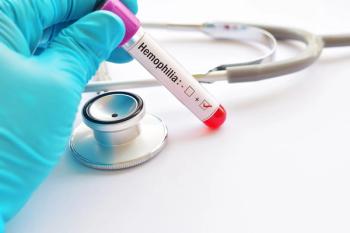
The evolution of CAP evaluation and management
Management of community-acquired pneumonia (CAP) in children is evolving as a result of changes in the microbial etiology of the disease and advances in diagnostic techniques.
Management of community-acquired pneumonia (CAP) in children is evolving as a result of changes in the microbial etiology of the disease and advances in diagnostic techniques, said Sheldon L Kaplan, MD, Professor and Executive Vice-Chair, Department of Pediatrics, Baylor College of Medicine, Houston, Texas.
Speaking about CAP at sessions on Saturday, October 24 and Sunday, October 25, Dr Kaplan noted that in the United States, the prevalence of pneumococcal isolates among children hospitalized for CAP declined following introduction of the 7-valent pneumococcal conjugate vaccine (PCV7) and fell further after implementation of 13-valent pneumococcal conjugate vaccine (PCV13). Although there appears to be a rise in CAP caused by non-PCV13 serotypes, the message in terms of management is that penicillin can be used to treat more than 98% of cases of pneumococcal CAP in hospitalized children, said Dr. Kaplan.
Findings of a recent study from the Centers for Disease Control highlight that respiratory viruses are the leading CAP pathogen in hospitalized children, particularly those aged younger than 2 years.
“Since viral upper respiratory infections often precede the development of bacterial pneumonia, the influenza vaccine is especially important for its potential to prevent more serious infections,” Dr Kaplan said.
Pediatricians should also be aware that group A Streptococcus, which can cause severe necrotizing pneumonia, is increasing as a cause of pediatric CAP in some communities.
When children have CAP with empyema, polymerase chain reaction (PCR) analysis of a pleural sample may increase pathogen detection and be useful for guiding further evaluation and management.
“Antibiotic susceptibility testing is not necessary if PCR identifies group A Streptococcus, which is fully susceptible to penicillin,” said Dr Kaplan. “It is indicated, however, in cases of pneumococcal or staphylococcal infection as those bacteria can be resistant to standard antibiotic treatment.”
Dr Kaplan also noted that clinical practice guidelines on the management of pediatric CAP developed by the Pediatric Infectious Diseases Society and the Infectious Diseases Society of America include a strong recommendation for obtaining blood cultures in children requiring hospitalization for presumed bacterial CAP that is moderate to severe. Although, the recommendation is based on low-quality evidence and is controversial because the positive culture rate is only about 7% to 10%, Dr Kaplan said that positive results are important for guiding antibiotic therapy and providing epidemiologic data.
Newsletter
Access practical, evidence-based guidance to support better care for our youngest patients. Join our email list for the latest clinical updates.











